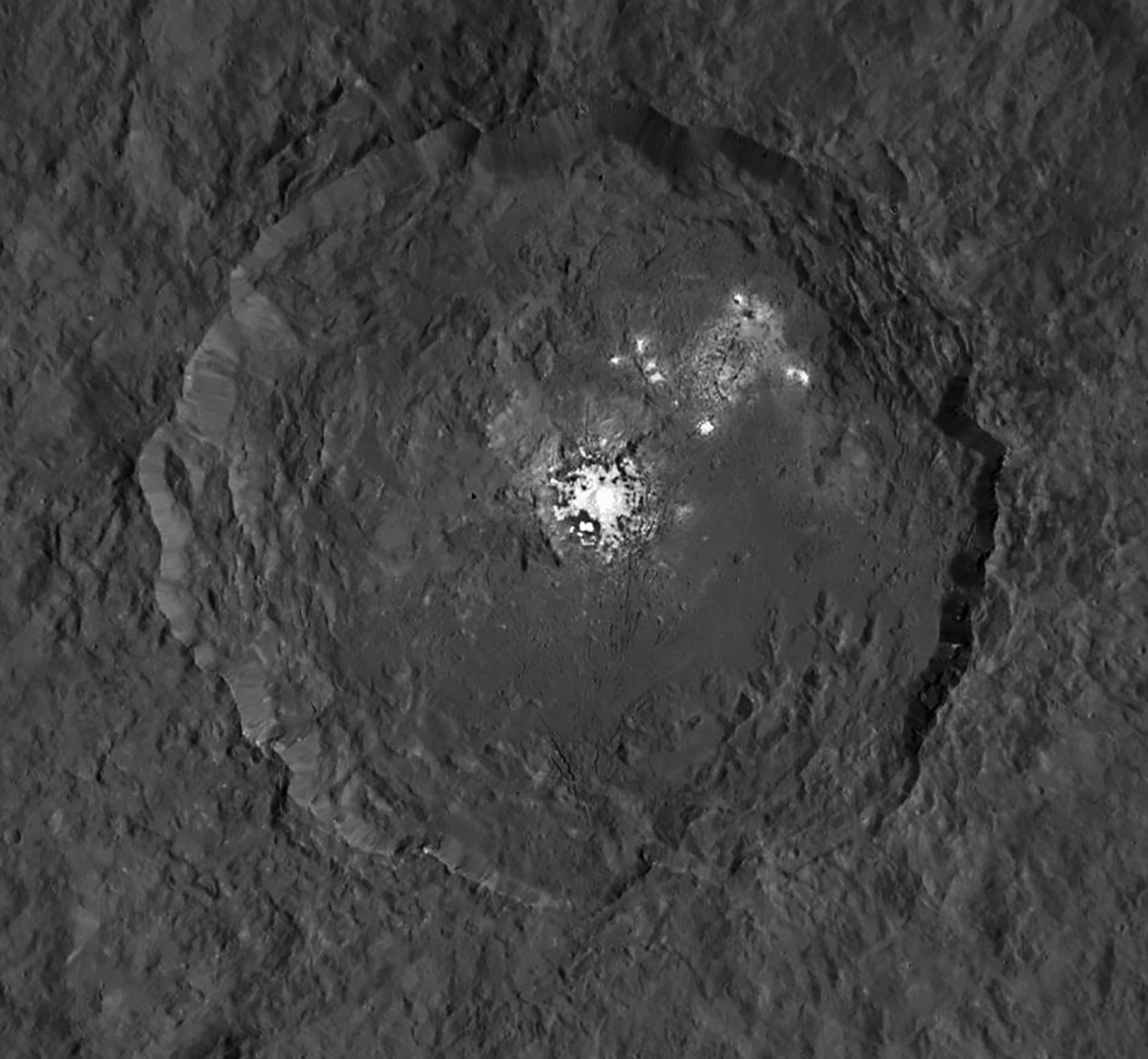All right, maybe not blinking like a flashlight (or a beacon on the tippity-top of a communication tower—don’t even start that speculation up) but the now-famous “bright spots” on the dwarf planet Ceres have been observed to detectably increase and decrease in brightness, if ever-so-slightly.
And what’s particularly interesting is that these observations were made not by NASA’s Dawn spacecraft, currently in orbit around Ceres, but from a telescope right here on Earth.
Researchers using the High Accuracy Radial velocity Planet Searcher (HARPS) instrument on ESO’s 3.6-meter telescope at La Silla detected “unexpected” changes in the brightness of Ceres during observations in July and August of 2015. Variations in line with Ceres’ 9-hour rotational period—specifically a Doppler effect in spectral wavelength created by the motion of the bright spots toward or away from Earth—were expected, but other fluctuations in brightness were also detected.
“The result was a surprise,” said Antonino Lanza from the INAF–Catania Astrophysical Observatory, co-author of the study. “We did find the expected changes to the spectrum from the rotation of Ceres, but with considerable other variations from night to night.”
Watch a video below illustrating the rotation of Ceres and how reflected light from the bright spots within Occator crater are alternately blue- and red-shifted according to the motion relative to Earth.
First observed with Hubble in December 2003, Ceres’ curious bright spots were resolved by Dawn’s cameras to be a cluster of separate regions clustered inside the 60-mile (90-km) -wide Occator crater. Based on Dawn data they are composed of some type of highly-reflective materials like salt and ice, although the exact composition or method of formation isn’t yet known.
Since they are made of such volatile materials though, interaction with solar radiation is likely the cause of the observed daily brightening. As the deposits heat up during the course of the 4.5-hour Ceres daytime they may create hazes and plumes of reflective particles.
“It has been noted that the spots appear bright at dawn on Ceres while they seem to fade by dusk,” noted study lead author Paolo Molaro in the team’s paper. “That could mean that sunlight plays an important role, for instance by heating up ice just beneath the surface and causing it to blast off some kind of plume or other feature.”
Once day turns to night these hazes will re-freeze, depositing the particles back down to the surface—although never in exactly the same way. These slight differences in evaporation and condensation could explain the random variation in daily brightening observed with HARPS.
These findings have been published the journal Monthly Notices of the Royal Astronomical Society (full text on arXiv here.)
Source: ESO


it seems to contain Natrium (Sodium) and Hydrogen absorption lines
NaHCO-lite?
I’m just being positive … lots of H’s and lots of O’s … would make Ceres easy access to space.
Hs and Os…could be the next big hit by Elle King
“… these observations were made not by NASA’s Dawn spacecraft, currently in orbit around Ceres, but from a telescope right here on Earth.” Yes, that is interesting, and especially so if Dawn can confirm the brightness changes.